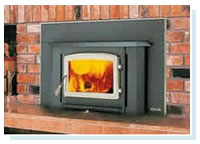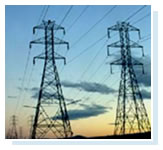All Areas in New England Now Attain PM Standards.
EPA "designates" air quality in all areas for six "criteria pollutants," one of which is Particulate Matter (PM). An area is designated as nonattainment if EPA determines that it has (or contributes to) pollution levels higher than allowed under EPA's national ambient air quality standards (NAAQS). Once nonattainment designations take effect, state and local governments have three years to develop implementation plans designed to meet the standards.
Under the 1990 Amendments to the Clean Air Act, Presque Isle, Maine, and New Haven, Connecticut, were designated as nonattainment with the PM10 "coarse particle" standard. Today, however, all of New England is meeting the PM10 standard.
On July 18, 1997, EPA established air quality standards for PM2.5, including an annual standard of 15.0 micrograms per cubic meter (μg/m3) and a 24-hour (or daily) standard of 65 μg/m3. On December 17, 2004, EPA issued official designations for the 1997 PM2.5 standards and made modifications to these in April 2005. [These standards were revised in October 2006 and in December 2012 – see below.] EPA designated areas as nonattainment if they violated the 1997 annual PM2.5 standard over a three-year period, or if relevant information indicated that they contributed to violations in a nearby area. EPA designated areas as attainment/unclassifiable if monitored air-quality data showed no violations of PM2.5 annual standard over a three-year period or if there was not enough information to determine air quality.
In New England, EPA designated two Connecticut counties (i.e., New Haven and Fairfield Counties) as nonattainment for the 1997 annual PM2.5 standard. These counties were part of a multi-state New York City metropolitan area, which included 10 counties in northern New Jersey and 10 counties in New York. Click here for a map of this New York City PM2.5 nonattainment area. All other areas in New England were designated attainment/unclassifiable for the 1997 annual PM2.5 standard.
States with nonattainment areas for the 1997 annual PM2.5 standard (click here for a national map) were required to submit state implementation plans (SIPs) to EPA by April 2008 outlining measures that states will implement to meet the PM2.5 standard. Connecticut submitted its attainment SIP for the 1997 annual PM2.5 standard on November 18, 2008.
On October 17, 2006, EPA retained the annual PM2.5 standard at 15 μg/m3, but revised the 24-hour standard to 35 μg/m3. On November 13, 2009, EPA published designations for the 2006 24-hour standard, and designated the same Metropolitan NYC Area (including New Haven and Fairfield Counties in Connecticut) as nonattainment for this standard. However, petitioners challenged EPA's decision to retain the annual standard (but did not challenge the 2006 24-hour PM2.5 standard). On February 24, 2009, the U.S. Court of Appeals for the DC Circuit remanded the annual PM2.5 standard to the Agency for reconsideration.
On November 15, 2010, EPA determined that the entire Metropolitan NYC Area had attained the 1997 annual PM2.5 standard. This determination was based on quality-assured and certified air quality data for the 2007-2009 monitoring period. Subsequently, on December 31, 2012, EPA determined that the entire area had also attained the 2006 24-hour PM2.5 standard. This determination was based on air quality data from the 2007 through 2011. In addition, PM2.5 monitoring data for 2012 indicated continued attainment of both standards. On September 24, 2013, EPA approved Connecticut's request to redesignate New Haven and Fairfield Counties from nonattainment to attainment for the 1997 and 2006 PM2.5 standards. As part of these approvals, EPA approved the state's 10-year maintenance plan for these counties.
On December 14, 2012, EPA revised the annual PM2.5 standard to 12 μg/m3 and retained the 24-hour standard of 35 μg/m3. Click here for more information on the 2012 PM Standards Revision (PDF) (3 pp, 301 K, about PDF). Monitoring data from 2008 through 2012 shows that all New England States are meeting the 2012 standards
Many strategies to reduce PM2.5 levels are in place. These include:




- NOx strategies to address ozone
- Diesel
truck and bus standards for PM
standards in 2007 will result in 90% PM reduction - Non-road
diesel standards for PM
tighter standards adopted by EPA in May 2004 - The
Clean Air Interstate Rule
CAIR will further reduce sulfur dioxide and NOx emissions from power plants
